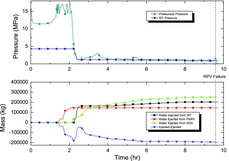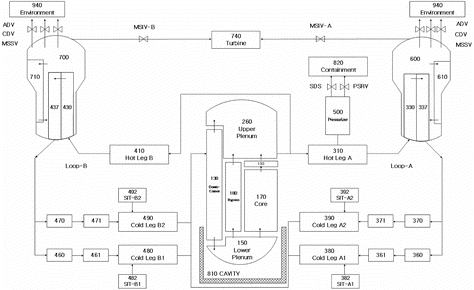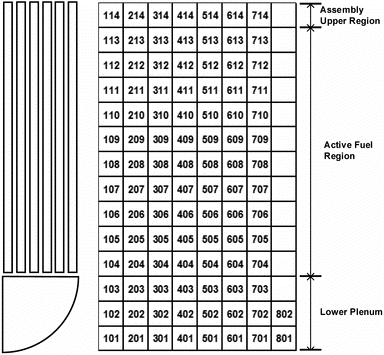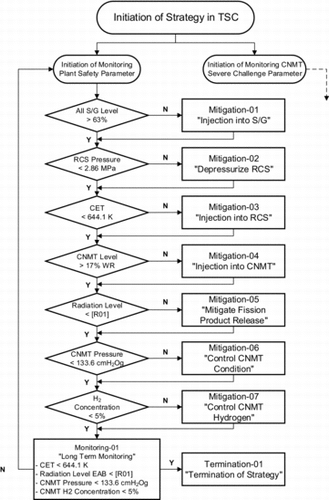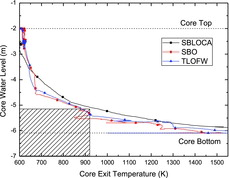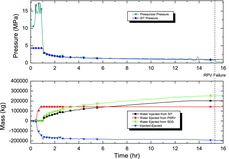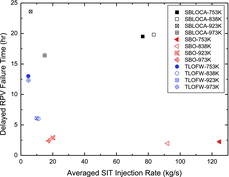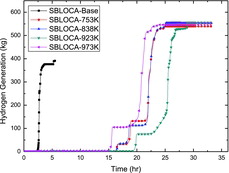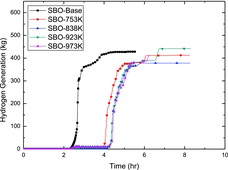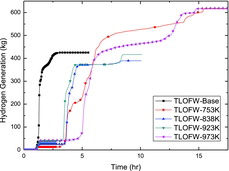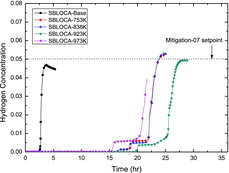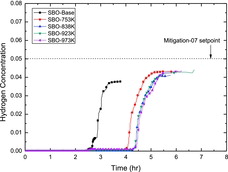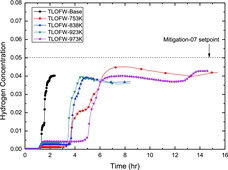Figures & data
Table 1. Typical characteristics of OPR1000 (Shin Kori units 1 and 2), CEOG PWR (Hanbit units 3 and 4), WOG PWR (Hanbit units 1 and 2), and Framatome PWR (Hanul units 1 and 2) at nominal operation.
Table 2. Summary of the simulation matrix.
Table 3. Probability of transition from initiating events to severe accidents for OPR1000.
Table 4. Severe accident mitiygation strategies of SAMG.
Table 5. Design value and steady-state conditions of OPR1000.
Table 6. Sequences of base cases.
Table 7. Operator's available action time.
Table 8. Delayed RPV failure time by mitigation strategy.
Figure 8. Pressure behavior and cumulative water mass injected and ejected regarding RCS for SBLOCA-923K, the most delayed RPV failure time case.
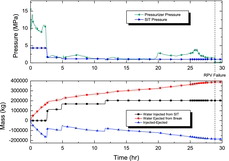
Figure 9. Pressure behavior and cumulative water mass injected and ejected regarding RCS for SBO-923K, the least delayed RPV failure time case.
